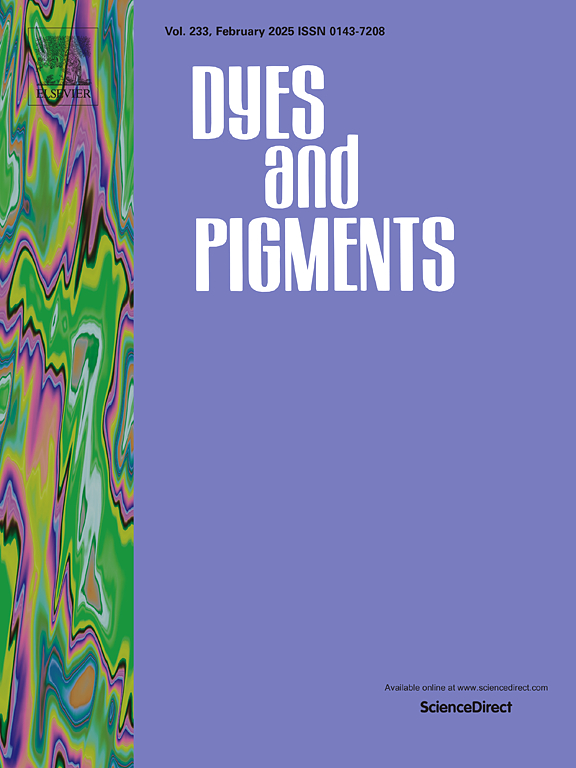Realization of bright deep-red aqueous luminescence from chlorophyll-derived CDs with hydrophilic modification for imaging application
IF 4.1
3区 工程技术
Q2 CHEMISTRY, APPLIED
引用次数: 0
Abstract
Chlorophyll-derived carbon dots (CDs) with strong deep red emission is an ideal candidate for high-quality bio-imaging in the NIR window. However, its low aqueous dispersity with severe emission quenching has limited its biological application. Herein, chlorophyll-derived CDs from mulberry leaf (MCDs) have been successfully coated with polyethylenimine (PEI) via a simple and mild solution-mixing method at room temperature. Experimental optimization proved that the MCDs produced at a reaction temperature of 120 °C and a reaction time of 4 h had the best PL strength, while the PEI-MCDs produced at a PEI/CDs ratio of 0.4 ‰ had the best PL strength. The PEI-MCDs composites demonstrate good aqueous dispersity and exceptional fluorescence stability under various conditions like UV irradiation, temperature fluctuations, salt and various substances. A strong narrow-band deep-red emission at 670 nm with quantum yield (QY) of 45.44 % is obtained in PEI-MCDs aqueous solution. The mechanism of lipophilic-hydrophilic transformation and emission recovery in aqueous solution is confirmed to be the amphiphilicity shell of PEI on MCDs, which effectively improves the aqueous dispersity and suppresses the occurrence of aggregation-caused quenching. Selective imaging of lysosomes in various cells has been realized by utilized PEI-MCDs without targeting ligands. Furthermore, clear tissue structures were shown in the in vivo fluorescence imaging of zebrafish embryos and larvae. The results indicate PEI-MCDs own notable amphiphilicity, superior stability and excellent deep-red emission, which hold great promise for biological imaging applications.
求助全文
约1分钟内获得全文
求助全文
来源期刊

Dyes and Pigments
工程技术-材料科学:纺织
CiteScore
8.20
自引率
13.30%
发文量
933
审稿时长
33 days
期刊介绍:
Dyes and Pigments covers the scientific and technical aspects of the chemistry and physics of dyes, pigments and their intermediates. Emphasis is placed on the properties of the colouring matters themselves rather than on their applications or the system in which they may be applied.
Thus the journal accepts research and review papers on the synthesis of dyes, pigments and intermediates, their physical or chemical properties, e.g. spectroscopic, surface, solution or solid state characteristics, the physical aspects of their preparation, e.g. precipitation, nucleation and growth, crystal formation, liquid crystalline characteristics, their photochemical, ecological or biological properties and the relationship between colour and chemical constitution. However, papers are considered which deal with the more fundamental aspects of colourant application and of the interactions of colourants with substrates or media.
The journal will interest a wide variety of workers in a range of disciplines whose work involves dyes, pigments and their intermediates, and provides a platform for investigators with common interests but diverse fields of activity such as cosmetics, reprographics, dye and pigment synthesis, medical research, polymers, etc.
 求助内容:
求助内容: 应助结果提醒方式:
应助结果提醒方式:


